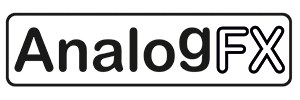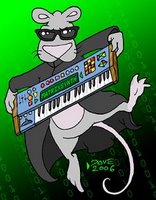Showing posts sorted by relevance for query A Work In Progress. Sort by date Show all posts
Showing posts sorted by relevance for query A Work In Progress. Sort by date Show all posts
Sunday, September 13, 2015
An Interview with Barry Schrader
Hi everyone! As you know Barry Schrader will be giving his farewell concert at CalArts on September 26. The following is the beginning of my interview with him. I opted to post the questions and answers as they come in. New QAs will get a new post so you do not miss them and they will be added to this post so we have one central post for the full interview. This should make it easier for all of us to consume in our busy lives, and it will allow you to send in any questions that may come to mind during the interview process. If you have anything you'd like to ask Barry, feel free to send it in to matrixsynth@gmail.com. This is a rare opportunity for us to get insight on a significant bit of synthesizer history, specifically with early Buchla systems, and I'd like to thank Barry for this opportunity. Thank you Barry!
Thursday, April 16, 2020
Expressive E Osmose sound design work in progress
Published on Mar 19, 2020 Expressive E
Playlist:
1. Osmose sound design work in progress #1
Shot beginning of March 2020 at the Expressive E office, this video is giving a sneak peek at the current state of 8 sounds that our in-house sound designers are programming using the EaganMatrix by Haken Audio, the synth engine that will be internal to Osmose.2. Osmose sound design work in progress #2
These sounds range from different categories such as classic synth sounds, FM keys, cinematic pads, lo-fi experiments and crazy effects, all taking advantage of the new keybed interactions offered by Expressive E's Augmented Keyboard Action©.
Audio recorded at 44,1kHz, 24bit with a Native Instruments Komplete Audio Mk1 without further processing.
While development of the industrialized prototype is going according to plan, the unit shown is still the same prototype unit that appeared in earlier videos. Creating it involved 3d printing techniques as well as manual labour by our engineers, meaning that you can see some irregularities in the keybed. The final, industrialized model will certainly not show such tolerances and will feature a flawless, even keybed
Shot at the Expressive E office, this video is giving a sneak peek at the current state of 8 sounds that our in-house sound designers are programming using the EaganMatrix by Haken Audio, the synth engine that will be internal to Osmose.3. Osmose sound design work in progress #3
Shot beginning of March 2020 at the Expressive E office, this video is giving a sneak peek at the current state of new sounds that our in-house sound designers are programming using the EaganMatrix by Haken Audio, the synth engine that will be internal to Osmose.
These sounds range from different categories such as classic synth sounds, FM keys, cinematic pads, lo-fi experiments and crazy effects, all taking advantage of the new keybed interactions offered by Expressive E's Augmented Keyboard Action©.
Audio recorded at 44,1kHz, 24bit with a Native Instruments Komplete Audio Mk1 without further processing.
While the development of the industrialized prototype is going according to plan, the unit shown is still the same prototype unit that appeared in earlier videos. Creating it involved 3d printing techniques as well as manual labor by our engineers, meaning that you can see some irregularities in the keybed. The final, industrialized model will certainly not show such tolerances and will feature a flawless, even keybed, compare the renders on our website: www.expressivee.com/discover-osmose
Credit:
Performed by: The Elements
Video: Samsara prod http://samsaraprod.com/
Sunday, January 30, 2011
genoQs Machines GmbH Shuts it's Doors
via the genoQs news letter:
"Dear all,
With the recent publication of the closing of genoQs Machines GmbH by regular legal procedure, we are issuing a long overdue message to give you a realistic outlook for the future. We also want to contain the spread of inaccurate information about the circumstances, and share our view of things.
Please refer to the link below.
http://www.genoqs.com/index.php?option=com_content&view=article&id=39&Itemid=70
Thank you,
Gabriel"
"Dear all,
With the recent publication of the closing of genoQs Machines GmbH by regular legal procedure, we are issuing a long overdue message to give you a realistic outlook for the future. We also want to contain the spread of inaccurate information about the circumstances, and share our view of things.
Please refer to the link below.
http://www.genoqs.com/index.php?option=com_content&view=article&id=39&Itemid=70
Thank you,
Gabriel"
Thursday, January 31, 2013
Update on I Dream of Wires Documentary Release
via Modular: the documentary on Facebook:
"When is "I Dream Of Wires" going to be released?
Hi,
My name is Jason Amm, and I'm the producer for "I Dream Of Wires" (IDOW), an upcoming documentary about the resurgence of modular synthesizers. If you're reading this, you probably already know all about IDOW, and have been anticipating it's release for quite a while. Chances are you may have even contributed money to one of our IndieGoGo fundraising campaigns, and have been wondering when you're going to receive your perk.
It was suggested in our IndieGoGo fundraising write-ups that the film would be completed sometime around Sept/Oct 2012. When we started this project, IDOW was in our minds going to be a small, straight-to-DVD niche film, and so this release date was a realistic goal. But the scope of the film, and the ever-growing interest in it, has gotten so much larger than we originally expected. We've been overwhelmed by all of the support from everyone following our progress, and it's largely this massive interest in the project that's ended up making it so much bigger than we originally anticipated. Though it has delayed the release, we are extremely excited by the wealth and quality of the material we've collected. With just two people working on IDOW (myself and director Robert Fantinatto), the task of sorting through over a hundred amazing interviews, and organizing those into a coherent and compelling film, has been daunting to say the least. We've really struggled to work out how to do this properly in a way that will satisfy the community of hardcore modular synthesizer fanatics (ourselves included), while also hopefully having an impact outside of that world.
So... "When is 'I Dream Of Wires' going to be released?"
"When is "I Dream Of Wires" going to be released?
Hi,
My name is Jason Amm, and I'm the producer for "I Dream Of Wires" (IDOW), an upcoming documentary about the resurgence of modular synthesizers. If you're reading this, you probably already know all about IDOW, and have been anticipating it's release for quite a while. Chances are you may have even contributed money to one of our IndieGoGo fundraising campaigns, and have been wondering when you're going to receive your perk.
It was suggested in our IndieGoGo fundraising write-ups that the film would be completed sometime around Sept/Oct 2012. When we started this project, IDOW was in our minds going to be a small, straight-to-DVD niche film, and so this release date was a realistic goal. But the scope of the film, and the ever-growing interest in it, has gotten so much larger than we originally expected. We've been overwhelmed by all of the support from everyone following our progress, and it's largely this massive interest in the project that's ended up making it so much bigger than we originally anticipated. Though it has delayed the release, we are extremely excited by the wealth and quality of the material we've collected. With just two people working on IDOW (myself and director Robert Fantinatto), the task of sorting through over a hundred amazing interviews, and organizing those into a coherent and compelling film, has been daunting to say the least. We've really struggled to work out how to do this properly in a way that will satisfy the community of hardcore modular synthesizer fanatics (ourselves included), while also hopefully having an impact outside of that world.
So... "When is 'I Dream Of Wires' going to be released?"
Thursday, October 01, 2015
Novation Introduces Circuit - New Stand Alone Grid-Based Groove Box
Uploaded on Sep 23, 2015 NovationTV
Novation reveals what's behind their "Start Something" campaign (previously posted here). Watching the videos I was expecting some sort of DAW software or controller. When I first saw the image of the Circuit, I thought my expectations where confirmed. Well, it might look like another DAW controller, but it isn't. This is a stand alone production system with the synth engine built in. The engine includes two six voice Novation analog modeling synths with wavetables, a four-part drum machine, and built-in delay and reverb. Don't miss by Q&A with Novation at the bottom of this post! The Circuit can be battery powered and has built-in speakers for full portability. All for a MAP of $329, available in October. Full details follow.
"This is Circuit. In this performance video, Harry Coade takes us through just some of the functionality of Novation's latest release. Sequencing beats with the 4 part drum machine, playing in harmonic sections with 2 desktop poly synths, adding mixer and fx tweaks and browsing through 32 different performance sessions allows you to start something quickly."
"Sometimes, starting a track can be a difficult and daunting task. We're sure that like us, you've sat staring at a screen overwhelmed by the choice of plug-ins, struggling to write a beat that inspires you, a melody that doesn’t sound corny.
 As our 'Start Something' series has illustrated, inspiration can come in many shapes and forms, from taking a break from the studio and just living life to digging through vinyl and hunting for that elusive sound to get the ball rolling.
As our 'Start Something' series has illustrated, inspiration can come in many shapes and forms, from taking a break from the studio and just living life to digging through vinyl and hunting for that elusive sound to get the ball rolling. We suffer from this problem too and wanted to create a solution. We wanted something small and portable, something that doesn't sound like a toy, something that gives maximum creative output from minimum input, something that encourages exploration and creates ‘happy accidents’. That's why we created Circuit.
We suffer from this problem too and wanted to create a solution. We wanted something small and portable, something that doesn't sound like a toy, something that gives maximum creative output from minimum input, something that encourages exploration and creates ‘happy accidents’. That's why we created Circuit.Circuit is a standalone groove box that combines Nova-heritage synths with expertly sculpted drums. It’s all you need to make music anywhere. You don't need to buy three different things. With Circuit you can create an entire tune by combining up to 128 steps of synth and drum patterns, then add space, depth and energy to your music with built-in effects. It even has built in sidechain. When you’re done, save your tune to one of 32 slots.
The intuitive navigation delivers immediate results, scale modes ensure that you never hit a bum note and cleverly mapped macros deliver deeper personalisation, ‘happy accidents’ and moments of genius.
With Circuit, making a genuinely decent sounding track requires very little effort and takes minutes not hours. And because it’s battery powered you can do it all on the bus, then take it back to your studio and finish it in your DAW.
Make new electronic music quickly and easily with a standalone groove box that combines Nova-heritage synths with expertly sculpted drums.
Circuit is designed to inspire. Two Novation polysynths and a four-part drum machine, combined with an intuitive grid-based sequencer in a standalone box that will have you making electronic music in minutes. Hit some pads, tweak the knobs and your track will start to emerge, all locked in time and key. Play around with effects, patterns and sounds in real time, to produce your track, brimming with fat grooves and beats.
Compact and battery powered with a convenient built-in speaker, Circuit can be used to make music entirely on its own. In the studio it will work alongside your standalone synth gear and run in sync with your music software too. In short, it's all you need to inspire, create and play new tunes.
Ideas in Seconds. Tracks in Minutes
Circuit inspires, straight out the box. It combines a 2-part synthesiser and a 4-part drum machine with a 4x8 RGB velocity-sensitive grid sequencer, which will have you finding new musical directions and creating electronic grooves in no time.
Stand Alone
Compact and battery-powered, Circuit truly stands alone. You can create entire tunes from scratch without a laptop, then save them and play them back live. You don’t even need speakers, because it has a one built in. Of course, Circuit will plug in to your sound system and work with your computer and other synth gear too, via its Line outputs, USB and MIDI ports.
Sunday, January 08, 2012
Cyclic: a new step sequencer, work-in-progress #1
YouTube Uploaded by dnigrin on Jan 8, 2012
"Cyclic is a forthcoming new step sequencer software application, from Defective Records Software, in collaboration with Mutable Instruments.
This is quick intro showing some of its features - it's using just one monophonic Mutable Instruments Shruthi-1 synth.
More information coming soon on the Defective Records forum: http://defectiverecords.com/forum/index.php?p=/discussion/64/upcoming-new-ste...
Defective Records: http://defectiverecords.com
Mutable Instruments: http://mutable-instruments.net"
Cyclic: a new step sequencer, work-in-progress #2
Uploaded by dnigrin on Jan 8, 2012
"Cyclic is a forthcoming new step sequencer software application, from Defective Records Software, in collaboration with Mutable Instruments.
This is a slightly more musical example compared to work-in-progress #1, using a polyphonic softsynth (Togu Audio Line's Noisemaker) together with two monophonic Mutable Instruments' synths, the Shruthi-1 and Shruti-1. I saved several presets and am mostly just cycling through them. Gives you an idea of how easily you can create some excellent patterns - this came together in less than 5 minutes. CAREFUL ABOUT YOUR MONITORING VOLUME AT 1:05, A NEW PART KICKS IN A BIT TOO LOUD!
More information coming soon on the Defective Records forum: http://defectiverecords.com/forum/index.php?p=/discussion/64/upcoming-new-ste...
Defective Records: http://defectiverecords.com
Mutable Instruments: http://mutable-instruments.net"
Saturday, January 19, 2013
Improvisation d'Hiver I - Synthesis in the Classroom
Published on Jan 18, 2013 RADIOKLOW·78 videos
"Improvisation of the 11th january 2013 for Little Phatty and Snow Virus played simultaneously through the Little Phatty's keyboard. Film and recording on camera by Nathan Nadal"
Improvisation d'Hiver II
Published on Jan 19, 2013
"Second Improvisation performed the 11th of January 2013, on Little Phatty and Snow Virus, played simultaneously through the Little Phatty's keyboard. Film and recording by Nathan Nadal."
Per the site guidelines, you need to be able to differentiate between the synths in any given post. The idea is you can get a feel for the synth/s featured. In this case it's not as clear what synth is producing each sound, but I thought I'd post it for the unique context. This performance is actually a lecture at a high school in France. It's great to know that students are being exposed to synthesis and the more abstract sonic soundscapes they are capable of.
Via Marc-Henri: "Winter Improvisation I and II are two pieces of music performed live for those of my students who attend the course of Philosophy and Electroacoustic music at "Lycée Edouard Herriot of Lyon". I created this course two years ago with the agreement of the Principal of Lycée Edouard Herriot and the Board of education of Lyon. It takes place among a program of education and culture in which i am absolutely free ti create and test new methods of teaching to transmit the taste for culture to youth. The course is also connected with the Museum of Fine Art of Lyon in which I will give a performance of electroacoustic music and poetry in march 2013.
The pieces of music presented here consist in two improvisations performed friday the 11th of january 2013. I wanted to introduce them to the question of improvisation because we plan for may a performance with a video, a recorded collective piece in which they will take the main part and simultaneously a live improvisation on this canvas. Thus, to give them an example of this kind of thing, I gave them two improvisations with my Little Phatty and my Snow Virus playing simultaneously, the second being controlled by the keyboard of the first one.
In the first attempt, I improvise on part of the recording of De Haute Vallée which is played by the computer, from00:20 until 13:14. My aim was to show them how you can recreate a former composition by playing improvisations on it and it is for me a kind a variation in the same kind of spirit I use in the Hadikat Raja series, except that I simply open a live music field over the root composition and melt it with this root composition instead of changing the position of former elements, erasing some of them, developing others and creating new elements in each new piece to produce a series of work in progress as I do in the Hadikat Raja Series. The Little Phatty played solo ends this first performance from 15:46 to 16:16.
In the second improvisation, the Little Phatty play together and with no recorded part, from the first second to the end.
All sounds are mine on both instruments, as usual, and I had no rehearsal before. This was the first time I used the LP and the Snow, since a long time. Thus, the performance is absolutely improvised.
Both improvisations were shot and recorded on a camera, by one of my students, Nathan Nadal who also created the titles and effects of the first film. I created the titles of the second, adding a the end a recent painting to conclude by a still image.
I hope the quality of sound is not to poor. The filming and recording of these two improvisations had not been planned and since Nathan asked me if he could shoot them I said yes because it is a track of the work we do in this course."
Lyon, the 15th of January, 08:25 am
Thursday, August 24, 2023
Introducing Beetlecrab.audio - Makers of Vector and Tempera



via Beetlecrab.audio
Dear friends,
as hot summer months are slowly passing by, our Prague workshop has been pretty busy working on all axes. Since there's now two products to care for, there's more things to do, more PCB wiring and more code to siphon through, but there's a silver lining in that when we're too deep in one thing and need some respite, there's always something to do on the other :)
We are Beetlecrab.audio
Another thing we're slowly dealing with is the inscrutable situation about our branding, which we have gotten ourselves into. Vector, VectorSynth Tempera, TemperaSynth Vector, Vectora Synth Temper. It's a mess. To get out of all this confusion we decided to adopt an umbrella for both existing and new upcoming projects: beetlecrab.audio. We couldn't quite figure out a suitable name but many of you started using this, so let's go with it. For now the website is a simple crossroad and will be improved over time. Both Vector and Tempera newsletters will be merged into one at some point, so if you're subscribed to both you may have received this email twice. Please ignore the other.
Now to the actual news. There's two parts here -- an update about how Tempera production is going, and announcement of the new Vector v2.9.1 firmware update. Let's start with -
Tempera Production Update
New upgrades
There's a few changes made to the hardware that we're comfortable sharing, now that they are verified. First, a great quality of life improvement: the TRS MIDI sockets are compatible both with Type A and Type B wiring ! This means that you don't have to worry and fiddle with unmarked adapters -- both types will work.
Next, we were still a bit unhappy with the powder coat finish of the metal case. It's difficult to get right: each attempt at different color and paint structure takes a lot of time to test and verify because at least a piece of metal needs to be painted and sent to us for examination, and it takes even longer because of course the metal case manufacturer doesn't have all the paints in stock, and sometimes they have to buy a whole bottle just to use a few drops. A sample palette exists but as we already learned with Vector, these give some idea but in the end look nothing like what you think on the actual metal, on the bends, crevices and so on.
Having said all that, I think we found and verified a finish that we're really happy with . It's less glossy and has a finer and more granular (hah) structure. It's very nice to the touch and I think looks much better. See for yourself, how the light interacts with the old vs new powder coat on top. Noticeable are also the beautifully laser etched graphics. (Tempera in old finish, plate on top in new finish. The light is angled in such a way to highlight the grain, the new finish is in fact even blacker than the old.)
Saturday, October 12, 2024
Machina Bristronica 2024
video uploads by sonicstate
Playlist:
1. Bristronica 24: MyVolts The Silent Alchemist Nears Shipping
We caught up with Caroline who gave us the latest update to the *Silent Alchemist*, a versatile power hub designed for musicians. Featuring five isolated USB-C outputs and a high-wattage sixth output capable of delivering 100 watts, the device can power a Mac with the remaining outputs providing 20 watts each. Its independent circuits ensure noise-free operation, catering to a variety of devices including the Dreadbox module and Sysmo slope generator.2. Bristronica 24: Circuit Happy ML2M Clock Sync module updates
The Silent Alchemist uses innovative step-up power tips to convert USB-C input to the correct voltage for various devices. There's also new feature: an uninterruptible power supply allowing seamless transition between wall and power bank sources. Also introduced were updated cables, such as silver candy cords and floating ring TRS to TS cables, expanding connection flexibility. The Silent Alchemist is expected to be available in December with a competitive pricing strategy.
More Info:
https://myvolts.com/
At Bristronica 2024, we caught up with the creator of the *ML2M*, who introduced us to the latest version. The ML2M is a compact Eurorack module with Wi-Fi capabilities, allowing seamless synchronization with Ableton Live, Bitwig Studio, and iOS music apps using Ableton Link without the need for cables. It either connects to an existing network or creates its own, ensuring robust sync even in environments with unreliable Wi-Fi. The module, which retains its 2HP size, now features MIDI integration through TRS jacks. Users can access a web interface to configure each output for different clock divisions and reset triggers, making setup straightforward and flexible.3. Bristronica 24: Archaea Exchange Patching Module
Alongside the ML2M, there's also the Missing Link Junior. This desktop version offers the same functionality but in a box format, complete with MIDI and CV clock outputs. Both products are now accessible, with a starting price of $250.
At Machina Bristronica 2024, we caught up with Arran from @archaea_modular_synthesis who presented the *Exchange Module*. This programmable patcher, a year in the making, evolved from its early prototype stage to a fully functional module. Arran explained how the Exchange can route synth voices via a beam controller and three exchange modules installed within the skiff, allowing for versatile patching. Operating like a matrix patchbay, it enables users to select inputs and outputs with the push of a button, create presets, and chain multiple modules for synchronized patching.
Communication between the modules occurs over the Eurorack power bus as well as over MIDI via the USB-C connection. The Exchange maintains analog integrity, ensuring there’s no conversion latency. The forthcoming release expected in late November 2024, includes a USB-driven editor for enhanced control capabilities.
LABELS/MORE:
Archaea,
Circle Guitar,
Circuit Happy,
Componental,
Dreadbox,
Halftime,
Landscape,
Machina Bristronica,
MATRIXSYNTH Members,
Midicake,
myVolts,
News,
Patching Panda,
Toadstool Tech,
u-he
Wednesday, July 01, 2015
New DIY MBLoopA Voxelspace MIDI Looper Vs Alesis Andromeda
[techdemo] DIY MBLoopA Voxelspace MIDI Looper Vs Alesis Andromeda
Published on Jul 1, 2015 Maelstroem3
"First test run of the Voxelspace MIDI Recorder and Looper, that i developed in 06/2015 based on the MIDIbox platform.
The loopa is a small USB-powered device, that records live loops (non quantized, no step recording) of up to eight MIDI clips onto SD card.
Notes (and quarternote beat lines) are visualized in 'Voxel Space'. The clips are looped and beatsynchronized.
The hardware is based on a STM32F4, with a whopping 192KB (yes, kilobytes) of RAM :). The OLED is a Newhaven 256x64x16 bluescale display.
Official build thread:
http://midibox.org/forums/topic/19585...
Hope you enjoyed the demo, it was not musical, just a tech test! :)
More features like session switching, loop length configuration and synced mutes/unmutes should be added, once there is more time :). Yes, I know, there are still a few bugs, especially regarding the position display, that is glitching around a bit, but hey, it has character... :-)
Thanks for watching!
Hawkeye/Maelstroem Records"
via the MIDIbox Forum:
"we recently had some very rainy days in southern Germany and MIDIbox-build-fever struck again, so I had to do something... my project build stack is very large, and even some started projects are not complete yet (MBProgramma), but this one has been on the wishlist for even longer than the Programma, so I just had to start it this year... otherwise it would probably never happen :-).
I have to say, that the MIDIbox platform is phenomenal and addictive! It would be so nice to work on something of this quality on a daily job basis... results can be reached very quickly, the documentation and code base is great. Thanks a lot for everything, TK.!
Let's start...
Motivation
* DAW hate
Turning on the computer and loading a DAW as complex as Ableton or Cubase makes sure any of my already limited inspiration will be gone by the time it is able to record MIDI. I'd like to sit down and "just jam". I felt, very often, that what i played was lost in time, because, of course, the computer was off. So I wanted a simple MIDI recorder, that "just records" automatically a few seconds after turning it on, without any major interaction. If what was just played sounded nice, it would be automatically stored on SD card in compatible .MID format for later playback or even some DAW-based post-processing. If not, well, one could just jam on, or delete the track (called clip in this app).
* Hardware minimalism
Building the unit should be quick and cheap. There should only be a minimum number of buttons and encoders. I managed to build everything including the control surface (yes, i know, it looks cheap, but it also was cheap :-)) on one long weekend - and so can you. We just use standard hardware (STM32F4 core, one DINx4, out DOUTx4 and a nice display). Because there are few components, it is very viable to do it on vector board, no immediate need for PCBs...
Published on Jul 1, 2015 Maelstroem3
"First test run of the Voxelspace MIDI Recorder and Looper, that i developed in 06/2015 based on the MIDIbox platform.
The loopa is a small USB-powered device, that records live loops (non quantized, no step recording) of up to eight MIDI clips onto SD card.
Notes (and quarternote beat lines) are visualized in 'Voxel Space'. The clips are looped and beatsynchronized.
The hardware is based on a STM32F4, with a whopping 192KB (yes, kilobytes) of RAM :). The OLED is a Newhaven 256x64x16 bluescale display.
Official build thread:
http://midibox.org/forums/topic/19585...
Hope you enjoyed the demo, it was not musical, just a tech test! :)
More features like session switching, loop length configuration and synced mutes/unmutes should be added, once there is more time :). Yes, I know, there are still a few bugs, especially regarding the position display, that is glitching around a bit, but hey, it has character... :-)
Thanks for watching!
Hawkeye/Maelstroem Records"
via the MIDIbox Forum:
"we recently had some very rainy days in southern Germany and MIDIbox-build-fever struck again, so I had to do something... my project build stack is very large, and even some started projects are not complete yet (MBProgramma), but this one has been on the wishlist for even longer than the Programma, so I just had to start it this year... otherwise it would probably never happen :-).
I have to say, that the MIDIbox platform is phenomenal and addictive! It would be so nice to work on something of this quality on a daily job basis... results can be reached very quickly, the documentation and code base is great. Thanks a lot for everything, TK.!
Let's start...
Motivation
* DAW hate
Turning on the computer and loading a DAW as complex as Ableton or Cubase makes sure any of my already limited inspiration will be gone by the time it is able to record MIDI. I'd like to sit down and "just jam". I felt, very often, that what i played was lost in time, because, of course, the computer was off. So I wanted a simple MIDI recorder, that "just records" automatically a few seconds after turning it on, without any major interaction. If what was just played sounded nice, it would be automatically stored on SD card in compatible .MID format for later playback or even some DAW-based post-processing. If not, well, one could just jam on, or delete the track (called clip in this app).
* Hardware minimalism
Building the unit should be quick and cheap. There should only be a minimum number of buttons and encoders. I managed to build everything including the control surface (yes, i know, it looks cheap, but it also was cheap :-)) on one long weekend - and so can you. We just use standard hardware (STM32F4 core, one DINx4, out DOUTx4 and a nice display). Because there are few components, it is very viable to do it on vector board, no immediate need for PCBs...
LABELS/MORE:
Alesis,
DIY,
MIDIBox,
New,
New DIY,
New DIY in 2015,
New in 2015,
New Tools,
New Tools in 2015,
Video
Sunday, October 03, 2021
Monday, February 13, 2006
The BRONTOLOGIC
Another interesting piece. Details below by Stephen of parsick.com. Title link takes you to Codex flores, what appears to be the home of the BRONTOLOGIC. Thanks Stephen!
Unfortunately I couldn't find a bigger shot. Update: bigger pic below.
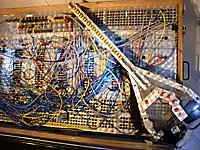
"The Brontologic was designed by a certain Werner Lambertz who had originally made a fortune selling jeans trousers (of all things...) in Germany in the 1970s. The first instrument was presented around 1979/1980. Lambertz´ idea was to design a musical computer that automatically produced good music, without any faults that musicians would create. Later, Kurt "Pyrolator" Dahlke of Germany´s proto electro band Der Plan (The Plan) wanted another machine like that as he felt this was something he could push the limits with, thus he started building a second Brontologic, assisted by Lambertz, in around 1980/81.
Basically, it was a sequencer which had several counters running in parallel, synced to a master clock. It was capable of producing up to six (I think) sequences at the same time, all running at different rates, having different numbers of steps, and all could be set up to different cycling modes independent from each other. I never quite figured how pitches were determined as it had no pots for adjusting voltages, just half a million of banana patch sockets. I guess each patch point in a horizontal row represented one pitch while the sequencer progressed vertically from the top to the bottom (though I have no evidence for that). It allowed the user to interact with the sequencer patterns, have one play backwards, have another stop at a certain point, or have yet another one shift its start and end points continously during playback. When fully patched up, it looked like "Spaghetti Bolognese" as Dahlke once pointed out. As an external controller the operator used some thing called "DIGitarre", made of stainless steel tubing and shaped vaguely guitar-like with loads of switches which allowed control over certain parameters of the Brontologic. Dahlke later admitted it was sort of bizarre to use this controller which clearly resembled the traditional rock´n´roll-type guitar while they were trying to get away from these overused r´n´r clichés.
In a 1993 interview with Germany´s KEYBOARDS magazine, Dahlke briefly explains the Brontologic. He used it to control his Korg MS-20 and later, he had an Emulator One interface built into it. Functionally, Dahlke compared the Brontologic with Buchla´s Thunder which allowed for similarly complex interactions with parameters and sequences on a MIDI level. I´m sorry I don´t have this issue available right now, maybe some fellow AHer could look it up for me (May 1993 issue, I think).
In my view, this device was sort of a comedy of errors. It must have been immensely expensive, and it was huge (about 2.5 metres square). It had an intimidating user interface, and it took ages to patch up. I think something along these lines could have been made in a simpler manner (like having a Serge Touch Keyboard Sequencer) but at that time Serges weren´t hugely popular in Germany. Neither were Buchlas. It seems to me that the Brontologic was best-suited for fractal-like sequencer patterns.
There is a nice track (180°) by Der Pyrolator on a compilation called "Verschwende Deine Jugend" (waste your youth) which sounds very much like a blueprint for the Node track "Alternator", all done on Korg MS-20 and Emulator One, most probably controlled by the Brontologic.
Sorry not to have more info,
Stephen."
 Update via marcel: "on http://gesellschaftsinseln.de/
Update via marcel: "on http://gesellschaftsinseln.de/punkbuch/fotos_78.html you'll find one bigger pic of the bronto, and much more old punk pixs
site is made from the author of "verschwende deine jugend", a book about punk and new wave in germany, juergen teibel"
Update via pyrolator in the comments:
"I found this article, not all of it is correct, but nevertheless thank you for talking about it. The Brontologik2 is now standing in a museum and I decided to write it in Max/Msp with a few further modifications, which was called the bronotlogik3. About two years ago I saw the monome and the potential to be the perfect controller for the brontologik4, which is written for the monome256.
More informations:
http://brontologik.blogspot.com/
http://docs.monome.org/doku.php?id=app:brontologik4
best wishes
pyrolator "
some vids:
a composing system
6 layer sending midi data (pitch, velocity and 2 controller)
1 layer starting clips in ableton live
8 variations each layer
8 modes (for each layer) to manipulate and arrange pitch, velocity, controller, scales, transpose, key, pattern length, randomness and probability of playing.
load and save single pattern or complete data
This is the first public-beta now.
This is Donationware and will be availible at:
brontologik.blogspot.com/"
Unfortunately I couldn't find a bigger shot. Update: bigger pic below.

"The Brontologic was designed by a certain Werner Lambertz who had originally made a fortune selling jeans trousers (of all things...) in Germany in the 1970s. The first instrument was presented around 1979/1980. Lambertz´ idea was to design a musical computer that automatically produced good music, without any faults that musicians would create. Later, Kurt "Pyrolator" Dahlke of Germany´s proto electro band Der Plan (The Plan) wanted another machine like that as he felt this was something he could push the limits with, thus he started building a second Brontologic, assisted by Lambertz, in around 1980/81.
Basically, it was a sequencer which had several counters running in parallel, synced to a master clock. It was capable of producing up to six (I think) sequences at the same time, all running at different rates, having different numbers of steps, and all could be set up to different cycling modes independent from each other. I never quite figured how pitches were determined as it had no pots for adjusting voltages, just half a million of banana patch sockets. I guess each patch point in a horizontal row represented one pitch while the sequencer progressed vertically from the top to the bottom (though I have no evidence for that). It allowed the user to interact with the sequencer patterns, have one play backwards, have another stop at a certain point, or have yet another one shift its start and end points continously during playback. When fully patched up, it looked like "Spaghetti Bolognese" as Dahlke once pointed out. As an external controller the operator used some thing called "DIGitarre", made of stainless steel tubing and shaped vaguely guitar-like with loads of switches which allowed control over certain parameters of the Brontologic. Dahlke later admitted it was sort of bizarre to use this controller which clearly resembled the traditional rock´n´roll-type guitar while they were trying to get away from these overused r´n´r clichés.
In a 1993 interview with Germany´s KEYBOARDS magazine, Dahlke briefly explains the Brontologic. He used it to control his Korg MS-20 and later, he had an Emulator One interface built into it. Functionally, Dahlke compared the Brontologic with Buchla´s Thunder which allowed for similarly complex interactions with parameters and sequences on a MIDI level. I´m sorry I don´t have this issue available right now, maybe some fellow AHer could look it up for me (May 1993 issue, I think).
In my view, this device was sort of a comedy of errors. It must have been immensely expensive, and it was huge (about 2.5 metres square). It had an intimidating user interface, and it took ages to patch up. I think something along these lines could have been made in a simpler manner (like having a Serge Touch Keyboard Sequencer) but at that time Serges weren´t hugely popular in Germany. Neither were Buchlas. It seems to me that the Brontologic was best-suited for fractal-like sequencer patterns.
There is a nice track (180°) by Der Pyrolator on a compilation called "Verschwende Deine Jugend" (waste your youth) which sounds very much like a blueprint for the Node track "Alternator", all done on Korg MS-20 and Emulator One, most probably controlled by the Brontologic.
Sorry not to have more info,
Stephen."
 Update via marcel: "on http://gesellschaftsinseln.de/
Update via marcel: "on http://gesellschaftsinseln.de/site is made from the author of "verschwende deine jugend", a book about punk and new wave in germany, juergen teibel"
Update via pyrolator in the comments:
"I found this article, not all of it is correct, but nevertheless thank you for talking about it. The Brontologik2 is now standing in a museum and I decided to write it in Max/Msp with a few further modifications, which was called the bronotlogik3. About two years ago I saw the monome and the potential to be the perfect controller for the brontologik4, which is written for the monome256.
More informations:
http://brontologik.blogspot.com/
http://docs.monome.org/doku.php?id=app:brontologik4
best wishes
pyrolator "
some vids:
brontologik4 for monome 256 (quick walkthrough) from pyrolator on Vimeo.
"brontologik4 for monome 256a composing system
6 layer sending midi data (pitch, velocity and 2 controller)
1 layer starting clips in ableton live
8 variations each layer
8 modes (for each layer) to manipulate and arrange pitch, velocity, controller, scales, transpose, key, pattern length, randomness and probability of playing.
load and save single pattern or complete data
This is the first public-beta now.
This is Donationware and will be availible at:
brontologik.blogspot.com/"
Thursday, May 12, 2016
Details on the Upcoming anAmoNo X Synthesizer From Gotharman
You've seen the videos, we now have full details on the upcoming anAmoNo X synth in directly from Gotharman. You'll find the full details on a new anAmoNo X site here, and captured below for the archives. Take a look at the specs. This is going to be one powerful synth, complete with swappable filters and more.
"Modular synthesizer with memory, swappable analog filters, sampler and granular effects.
Please notice: anAmoNo X does NOT work with the expansion box series. Instead it has replacable analog filters.
The most flexible Gotharman synthesizer ever!
I was really happy with the flexibility of my Eurorack system, but since I spend most of my time running Gotharman's, and do not have very much time for playing music, I was not really happy with the lack of preset storage on this. I always ended up spending a huge lot of time tweaking knobs and rearranging cables, and not really getting any tracks composed (inportant or not :-)). This actually became a bigger and bigger annoyance to me, and in my Christmas holidays 2015, I decided to do something about it.
At first I started to design a module with 32 audio inputs, 32 CV inputs, 32 audio outputs, 32 CV outputs, 64 knobs, a display and memory. The idea was to connect everything of all my eurorack modules to this (hmmm...actually I am not sure if this module would have had enough connections...), connect the modules via an internal cross-bay, and adjust all the CV and audio levels on the 64 knobs. It did though, pretty soon, become clear to me, that this module would be huge and really expensive to produce. On top of that, not all parameters are CV controllable on all modules, so it would require quite a bit of soldering to get this connected to everything.
So I took a few days of brainstorming with myself, and came up with a new idea: The most important sound shaping thing (to my opinion), is the filter. So if I just could scramble things a bit down, and make a box with oscillators, VCA's, modulation sources, and maybe some effect modules, and just made the filters replacable, it would theoretically give almost the same possibilities as my eurorack system, but with added patch storage. And if I one day got tired of its sound, I would just have to replace one or both of its filters, and then I would get new sounds, without having to design or purchase a completely new synth. The design of anAmoNo X began...
Thursday, November 14, 2019
Announcing Bitwig Studio 3.1
Published on Nov 14, 2019 bitwig
"Pitch is a fundamental cornerstone of music, and Bitwig Studio 3.1 is tuned up with new exciting ways to work with pitch and scales. Based on Bitwig Studio's unique way to work with micro-pitch information, our new Note FX device Micro-pitch lets you dynamically retune notes, import existing scales and define your own."
Wednesday, July 08, 2020
Patch Notes: Ennio Morricone Tribute
TheEndorphines
"Ennio Morricone tribute patch based on the Good, Bad & Ugly soundtrack.
In this patch we are using Furthrrrrr generator with exponential FM to add inconsistent pitch drift in order to make the sound more realistic and human."
---
As many of you likely know, film composer Ennio Morricone passed away on July 6. He didn't work primarily with synths but he did incorporate them. He actually composed the soundtrack for The Thing using synths as a tribute in a sense to John Carpenter. From The Vinyl Factory:
"This is an unusual release in the soundtrack back-catalogue in it being a rare instance where John Carpenter chose not to score one of his own films, and where Morricone experiments with synth-tones in his composition, seemingly in acknowledgement of Carpenter’s style.There’s a lot of muddied details that surround it, but as the story goes Carpenter was disappointed with what his musical hero (he got married to the music of Morricone) presented and embellished what appeared in the cinema with some of his own fills, leaving out a great deal of what Morricone had prepared. The LP however, includes tracks selected by Morricone and trumps his other works for horror in suspense and execution. Nominated for a razzie. Go figure."
I read that Ennio Morricone believed a synth shouldn't be used to recreate real world instruments, but rather as it's own instrument. via Wired:
"To create that original score for Tarantino, Morricone largely turns to tools unavailable in 1964, like synthesizers, which drive the tense, gloomy eight-minute overture. (Morricone’s compositions for The Thing, used in The Hateful Eight, were some of his first work with synths in the early 1980s.)
The experimenting composer isn’t above technological advances, but he’s quick to warn young composers of the dangers of seductive technology. “Electronic instruments have to be used to justify something that doesn’t exist, not to replace for instance an orchestra,” he says. “If you use the synth just to recreate the sound of an existing musical instrument, it is wrong. But if you use the synth to create sound that doesn’t exist, that’s a very wise way to use it.”
So technology can be a cautious step forward in music composition, as long as you don’t use it as a crutch. “If the composer—or the so-called composer—becomes a kind of slave of technology, if he uses technology in a toxic way, this is not progress,” he says. As Morricone sees it, technology’s role in music is “a moral stance, not only a technical stance.” A broader variety of possible sounds can benefit a soundtrack, of course, but the ease of synthetic sounds is not worth the loss of the authentic and everyday. Use technology to add a human whistle or the real tick of a watch, but don’t replace them with false facsimiles. As he describes it, in composing, “everything must start from your soul, from your heart, even when you use technology.” In his score for The Hateful Eight, Morricone is, in part, reusing music composed for a thriller in 1982 for a Western in 2015—but 70 years after his first Western, he insists he’s still experimenting, from the heart."
P.S. Thanks to gridsleep for requesting a post on Ennio Morricone and TheEndorphines for the video. I was hoping something to pay proper tribute would come in and it did.
Wednesday, May 15, 2013
A Patch A Day by hamiltonulmer
Update: you can find hamiltonulmer's page here.
"I am not new to music, but I am new to modular synthesis. So I am creating one simple patch a day in order to get used to my small system.
I will do approximately 365 patches over the next year. Over that course of time I will likely add modules, change my setup, and explore various rabbit holes.
Two questions arise from these constraints. First, is a small 6U, 84HP system musically sufficient and diverse enough for a worthwhile patch, every day? Second, given that no matter what I intend on recording a patch a day, regardless of the outcome or circumnstance, what is the relationship between quantity and quality?"
via Pierre Serné on The MATRIXSYNTH Lounge
Playlist:
(these are in reverse order by hamiltonulmer - Day 1 was missing in the playlist so I embedded it below).
LABELS/MORE:
Doepfer,
eurorack,
Featured,
intellijel,
Make Noise,
Pittsburgh Modular Confluence,
Video
Friday, January 28, 2011
M185 software step sequencer - work in progress
YouTube via dnigrin | January 28, 2011 |
"New software step sequencer, inspired by Ryk's M185 hardware DIY sequencer. Built with Cycling 74's Max/MSP. Work in progress, not done yet..."
Update via Dan on the AH list:
"To address the avalanche of questions I've gotten since -- fueled by the success of my software Klee (http://defectiverecords.com/klee), this is a software recreation of a step sequencer inspired by RYK's M-185 hardware DIY step sequencer - some examples and more info:
http://sys100m.org/viewtopic.php?t=154&sid=539defbded7364e82a6678c84f35daca
http://www.youtube.com/watch?v=vK1PoQffhjk
http://www.youtube.com/watch?v=Swi2fNeNCuE
Basically, this sequencer works by advancing the pattern through (up to) 8 stages. Each stage can have have anywhere from 1 to 8 clock pulses that are advanced through. Each stage has a note value. The stage operates in 1 of 4 possible gate modes: Mute, Single, Multi, and Held. In mute mode, the stage is silent for however many clocks it is set for. In single mode, the note triggers for the first clock of the stage, and then it is silent for the remainder of clocks (if any) in the stage. In multi mode, the note is retriggered for each clock of the stage. Finally, in held mode, a single note is held for the duration of all of the clock pulses of the stage.
As Mark Rivera said a while back on AH, the M185 is "... the only alternate concept to x0x, knob-row, and arpeggiator styles. It's all three but none of them?"
That's the basic idea. Of course, there's details - you can change the clock pulses from anywhere between whole notes to 1/32nd notes. You can change the gate duration times. You can change the direction of the sequence through the stages - forward, backward, ping pong, and random. You can control the total number of clock pulses in a pattern, irrespective of the number of stages.
The software version will have most of the features of the hardware sequencer, plus more (still being finalized!). It will work with MIDI rather than control voltages/triggers. It will send MIDI to any MIDI device (hardware or software), and will work with either an internal clock or MIDI clock. It can also host a VST instrument plugin. It will save and load presets.
Mac and PC, cheap like all of my software. I hope to have it ready within the next 1-2 months, real life notwithstanding!
Dan"
Wednesday, August 07, 2019
itijik Production Club
Supporting MATRIXSYNTH member itijik has announced a new production club through his Patreon site. Details follow:
"The purpose of the itijik Production Club is to help all members constantly improve their sound and music, spark inspiration to release more music, reach individual goals, achieve commercial success if desired by the truly dedicated. Good sht. But sometimes even the most talented can lose the “good sht” in the details. I hope the positive vibe, direction and schedule of the club will also help push through mental and creative blocks for those struggling in some way. I’ll be providing samples, tools, stems, and presets to play/work with each month, and eventually I will be streaming production live with chat and Q&A!
There’s monthly song challenges in what I’m calling The Chop Shop. This is a monthly showcase and promotion of club member’s work. They also serve as a way to practice and share new song and production ideas. No doubt this community will be supportive of each other, give constructive feedback, share samples and get some collaborations going.
Here’s how the Chop Shop works:
itijik and other members will add any of their own royalty free samples they want for that month’s sample pool. These can be anything from a professionally recorded bass line, to a dog fart recorded on your phone. These will be made available to all members without any strings attached, and your output will be fully owned by you. No worry of sample clearance or ownership getting in the way, if you happen to make a masterpiece in the process.
Participating members will then have a month to work on a piece of music using ONLY the samples taken from the pool. This could be very challenging, depending on the sample pool. Anyone looking for improvement in music production should see this as a huge opportunity to showcase yourself and your ideas, learn new techniques and tools, keep your production schedule moving and inspired, and a way to network with similarly motivated creatives. Some dope collaborations and projects are inevitable!
I will share some of my favorites on IG and other social media channels at the end of each month for member promotion.
All music production materials are free to use in commercial projects or otherwise with no royalties expected. However, wouldn’t it be cool if some chose to include a credit and/or small percentage of releases to members submitting material they connect with? This could develop working relationships for potential collaborations or deals in the future! Try to give more value without expectations and see what happens to the vibe.
One of The Values and Differences of the club will be the maximum member count. It’s limited to 1000 people at anytime and will NEVER be increased.
The exclusivity of monthly production materials is special. With some of those sample subscription services you are sharing that pool of samples with MILLIONS of people. They’re all using the same samples, and the majority are probably using the good stuff pretty open in their works. No wonder loads of music released now just fades into the background, they all sound the same! Let’s not just blame the samples though. There’s more that goes into production than just good samples. And this club/collective is more than just an exclusive version of those sample subscriptions.
We are focused on technique, improvement and vibe; Creating and innovating our own voices in music and sound. This smaller group allows for focused attention to get heard in context of your own skill level and progress. Everyone benefits from a tighter network of people with similar goals. It forms an actual community rather than a sea of unknowns with unknown intentions. A meeting place to explore your musical ideas and have some context to chat about them.
The Price is low for good reason. Minimum club dues is $5 per person, per month. This makes the club more accessible, but it still shows a level of commitment to your craft and drive by investing in yourself. There aren’t multiple levels of membership, $5 and you’re in with us! You have the option to pledge more than the minimum, but there is no additional benefit offered other than my gratitude. The minimum from you and other members will afford me the time to operate the club and create production materials for it.
Let’s make more music with Worry Free, Royalty Free Licencing. All production materials will be released throughout the month, but licenses will cover the lot of that month’s material. When you pay your dues for the month, you are licensed to use them as you like in commercial projects or otherwise, as long as they aren’t used in isolation or re-distributed in any way.
The Production Material License covers each member’s collection of monthly lots of audio samples, presets, stems, DAW project files or any other music production material files provided by itijik and other members. Other members can voluntarily contribute their own royalty free content and materials to be featured in club events including the Chop Shop. All of the production material will be licensed royalty free to all members that have paid the dues for the month they are released, which is limited to 1000 licensees per month of material. It is the full responsibility of contributors to submit only royalty free material.
There’s a few Bonuses available to you right now when you sign up!
If you know someone that belongs in this club, get them in now! As long as the total member count is below 1000, each current member gets one referral per month. If you get a friend to sign up I’ll give a month of dues back to you.
If you have purchased any of my sample packs in the past, I will give a month of club dues back to you when you sign up.
The collection of itijik sample packs are also included when you sign up within the month of August 2019! 'Brutal Kicks', 'Brutal Snares' and 'Toy Piano' are all included for your use. "
Tuesday, March 09, 2021
Studio.h WPM Wireless Preset Manager for e-series compatible modules. Unfettered Preset Management!
video by Kent
"Introduction to the liberating Studio.h WPM (Wireless Preset Manager).
I'm working on the next video as this uploads. We'll look at everything in great detail, including:
Small system ideas
a 24 panel system
The configuration pages
and more.
00:00 Start
01:28 WPM Close up
01:37 WPM Configuration switches
01:46 What's in the box & adapters
01:50 In the case
02:20 Switching Presets over WiFi!
03:15 System Considerations w/206e
04:00 WPM w/206e & Stobe/S&H Strategy
04:53 Notes about my system
05:31 The 2 pages WPM serves up
06:12 Physical size and considerations (will it fit?)
07:18 Dimensions: Height & Depth
08:19 Easel-K: A Match Made in Oregon - The Ideal Candidate
08:51 225h does it do PM?
09:34 Easel-K innards. Power connectors are available.
Discussion on Muffwiggler: https://bit.ly/3vaVHWz
===
Introductory video. Lots of talking and discussions of strategies and usage in systems.
Be sure to use the navigation/progress bar to jump to sections of interest for repeated viewing and pausing. I left many snapshot/screengrabs up for only 5 seconds as the video is already quite lengthy and one can easily pause upon what one wishes to see in greater detail.
More in the way of actual use coming up in next videos. I'll show it in my 24-panel system and then either my 10-panel or 4-panel (currently out on loan). We'll go through the pages that are served up by the WPM, etc.
[b]Answers to a handful of likely questions:[/b]
Q: How does it work?
A: It is a WiFi server and serves up (currently) two web pages that are accessed via a web browser. I've tested it on a Mac, iPad Pro, iPhone6s, and my ancient iPhone 3GS. The 3GS renders the main page strangely (fault of the browser due to its age and lack of updates) but it does work. Any cheapo Android should work and Studio.h have tested a few of them.
Q: Will it work with v2 (non-Primo) 200e systems?
A: Yes, there is a switch for this shown at 01:37
Q: Is it possible to change the log-in information?
A: Yes, the WiFi name and password can be changed. I'll demonstrate this in the next video. There is also a switch, at 1:37, showing that the system can be made entirely 'Open'. Live dangerously!
Q: Will this enable preset management of my 208 variant?
A: No. None of the 208 units are e-series compatible. They simply don't have the hardware onboard for e-series knob positions, slider positions, patching, levels, etc.
However, for the Easel-K owner, you've just level-upped your 223e!
Q: Will it coexist with existing Buchla Preset Managers (206e/225e).
A: Yes, as shown in this very video plus the leveraging of Preset Management Strobe Mode. See 04:00
Q: How much does it cost? How do I order one?
A: $400 USD and drop Studio.h a line on: http://studiohsoftware.com/contact
Bravo, Studio.h!"
Tuesday, June 02, 2015
Theseus - Digital Modular System by Bendan Byrne
Published on Jun 2, 2015 Brendan Byrne
More information on the Theseus Digital Modular System can be found at...
http://cargocollective.com/theseus/Ab...
"Theseus is a platform for designing modular electronics instruments for musical and visual composition. Building on the Eurorack analog synthesizer standard, the platform uses ⅛” patch cables to interconnect modules. However, unlike the Eurorack standard, Theseus is entirely digital and produces MIDI/OSC control messages rather than audio signals. This simplification in fidelity greatly reduces the cost of materials and complexity of electronic circuits, making patch cable compositional systems more accessible to artists and musicians. A collection of 14 modules was designed to demonstrate the potential of such a platform. These modules highlight what designs become possible when material expenses drop and prototyping time is shortened."
Playlist:
1. Maht Dvdr - Unlike the other modules that produce simple sequences or steady patterns, Maht Dvdr possesses the ability to create elaborate and evolving compositions through an automated routing system.
The module is driven by a master clock. With each trigger signal it receives an onboard software counter increases by one. At the same time sixteen frequencies, each a division of the current counter value, run in the background. These channels are accessed and routed to each output using three inputs. The first input receives a voltage that determines which of the ten output positions to select. The second input determines what divided frequency to assign to that output. Lastly, a latch input locks the selected divided frequency to the selected output channel.
2. Mandalatron - The Mandalatron is a four channel ten step sequencer. Each channel possesses the same values set by the ten central rotary controllers, but with isolated clocks and sequence lengths. When the clock input of a channel is triggered, the sequence will advance by one step and reset to the first step at the point designated by the sequence length controller. This arrangement and iteration of channels allows for complex rhythms to be created easily. It was designed with pitch output in mind, but these voltages can be used to modulate other variables such as note length and velocity to great effect.
Graphic design was roughly inspired by mandala patterns to highlight the overlapping and symmetrical effects of the module’s functionality.
LABELS/MORE:
Brendan Byrne,
eurorack,
New,
New in 2015,
New Makers,
New Makers in 2015,
New Modules,
New Modules in 2015,
Theseus,
Video
NEXT PAGE
HOME
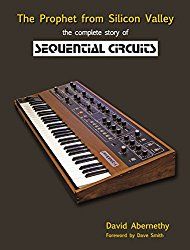
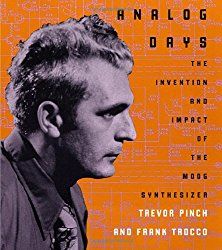
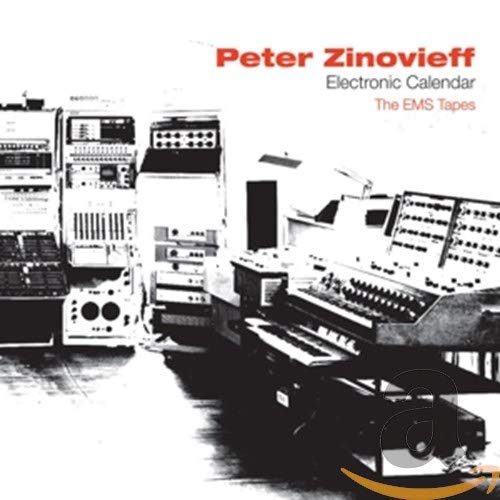
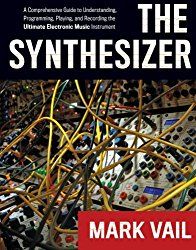
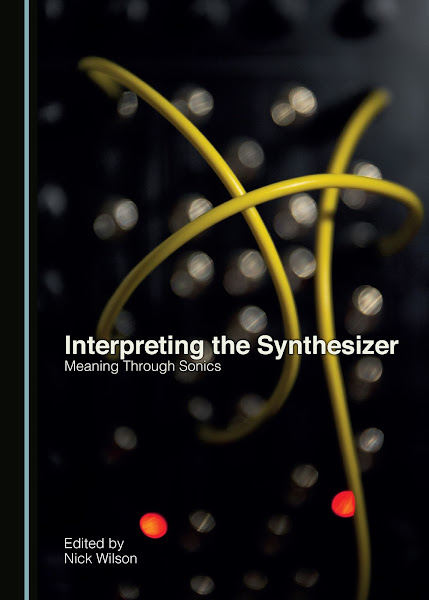
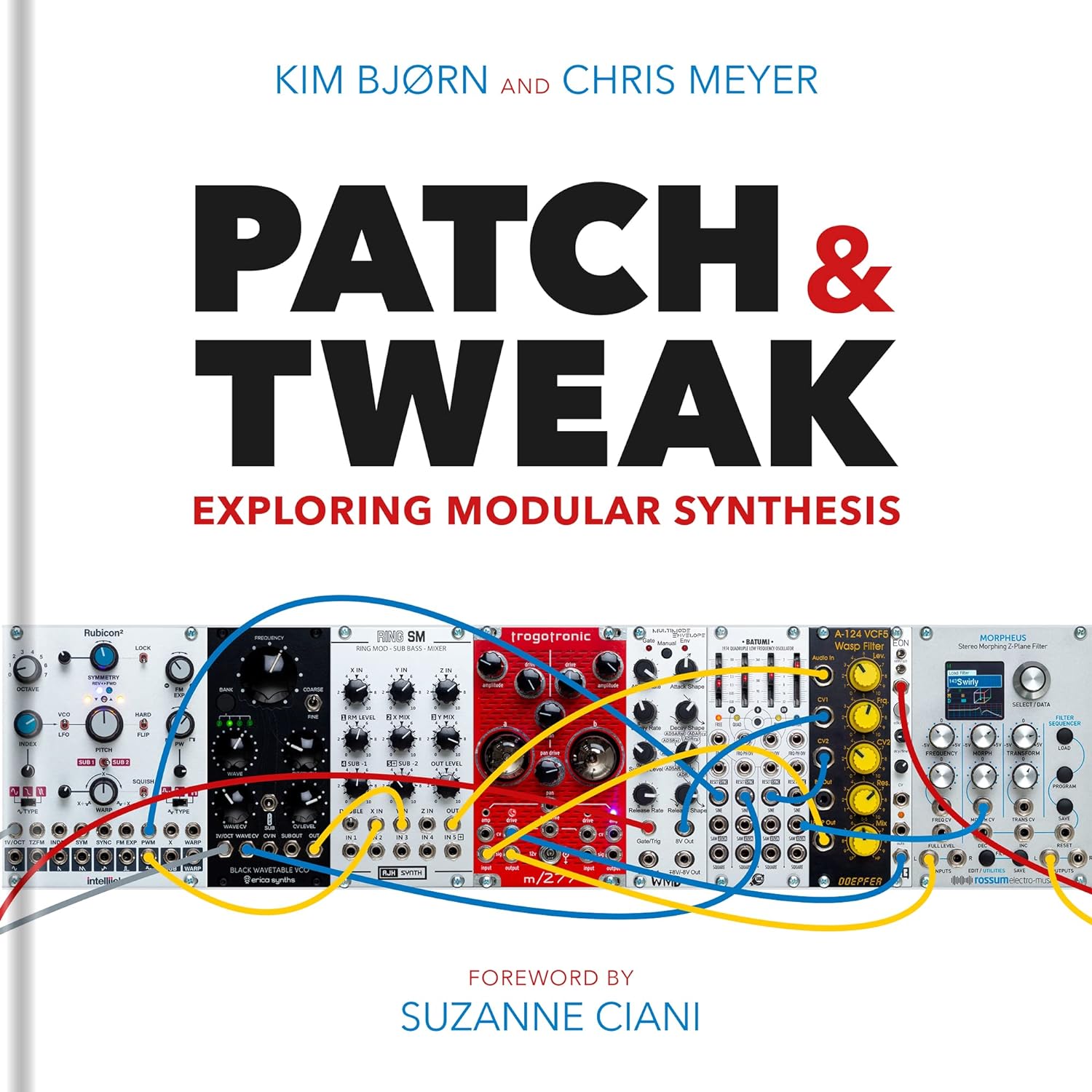

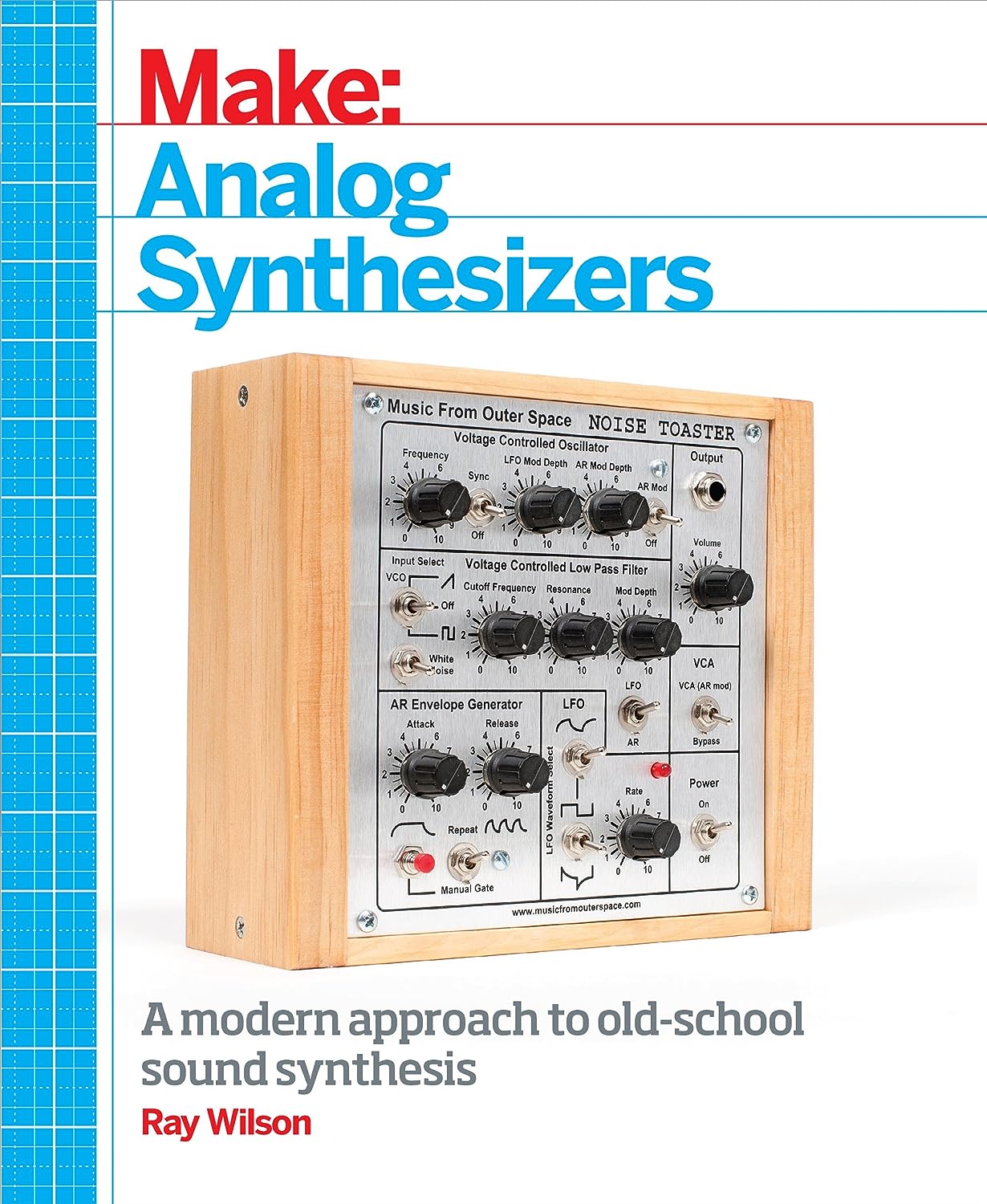
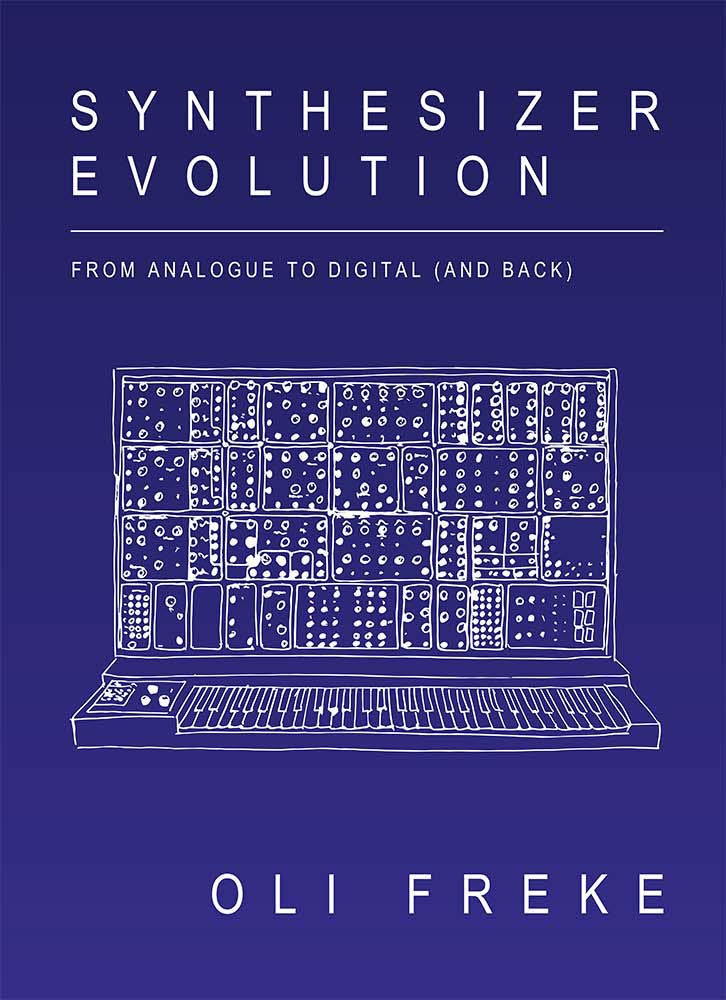
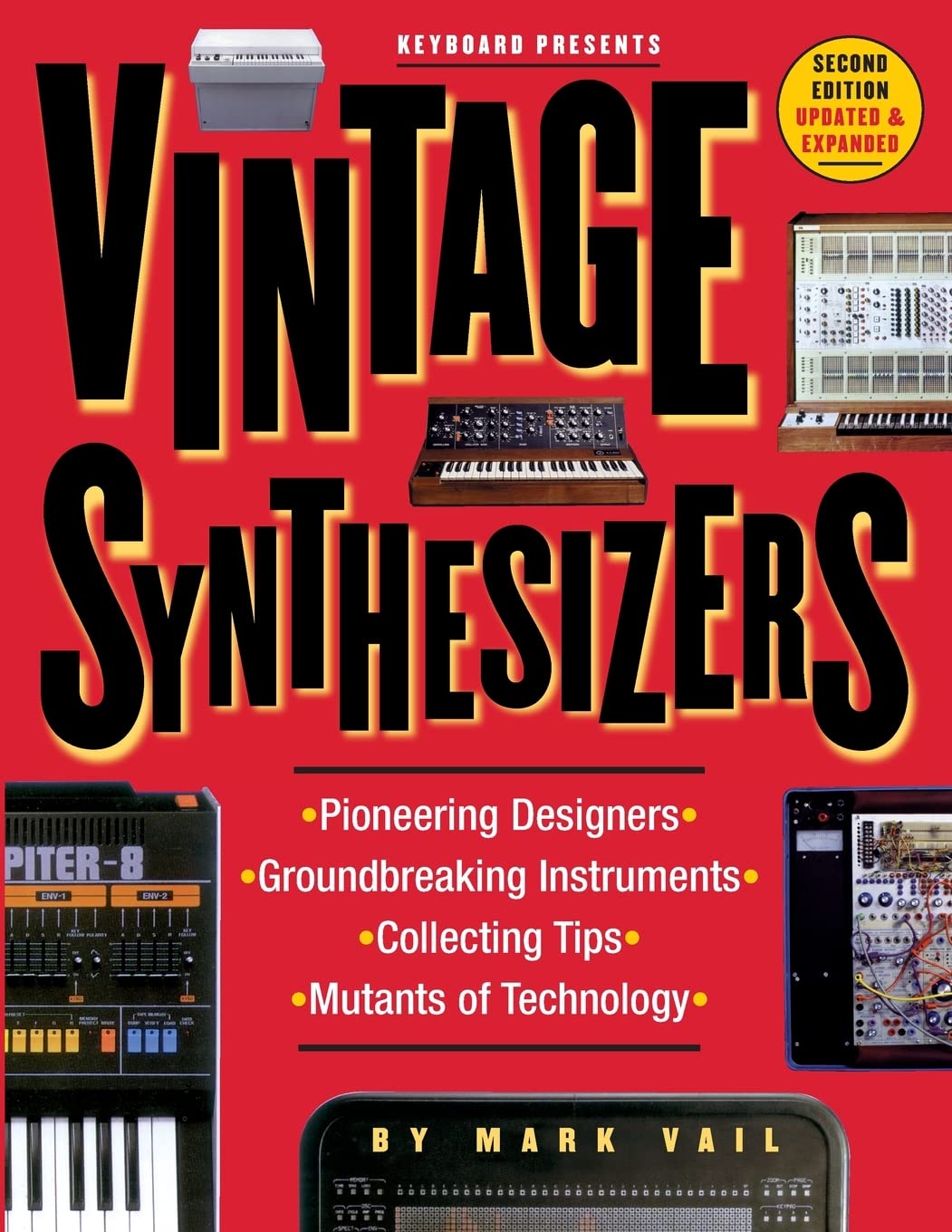
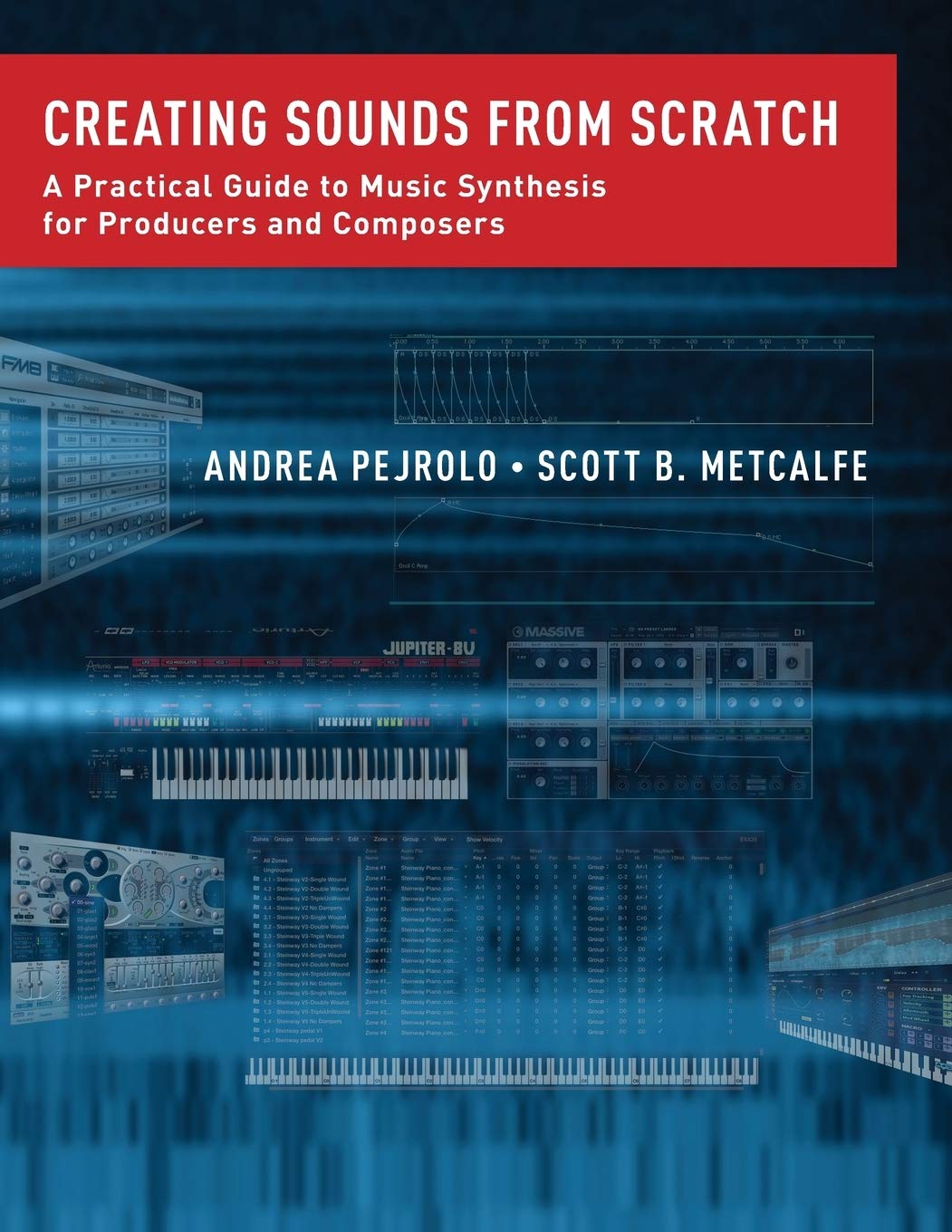
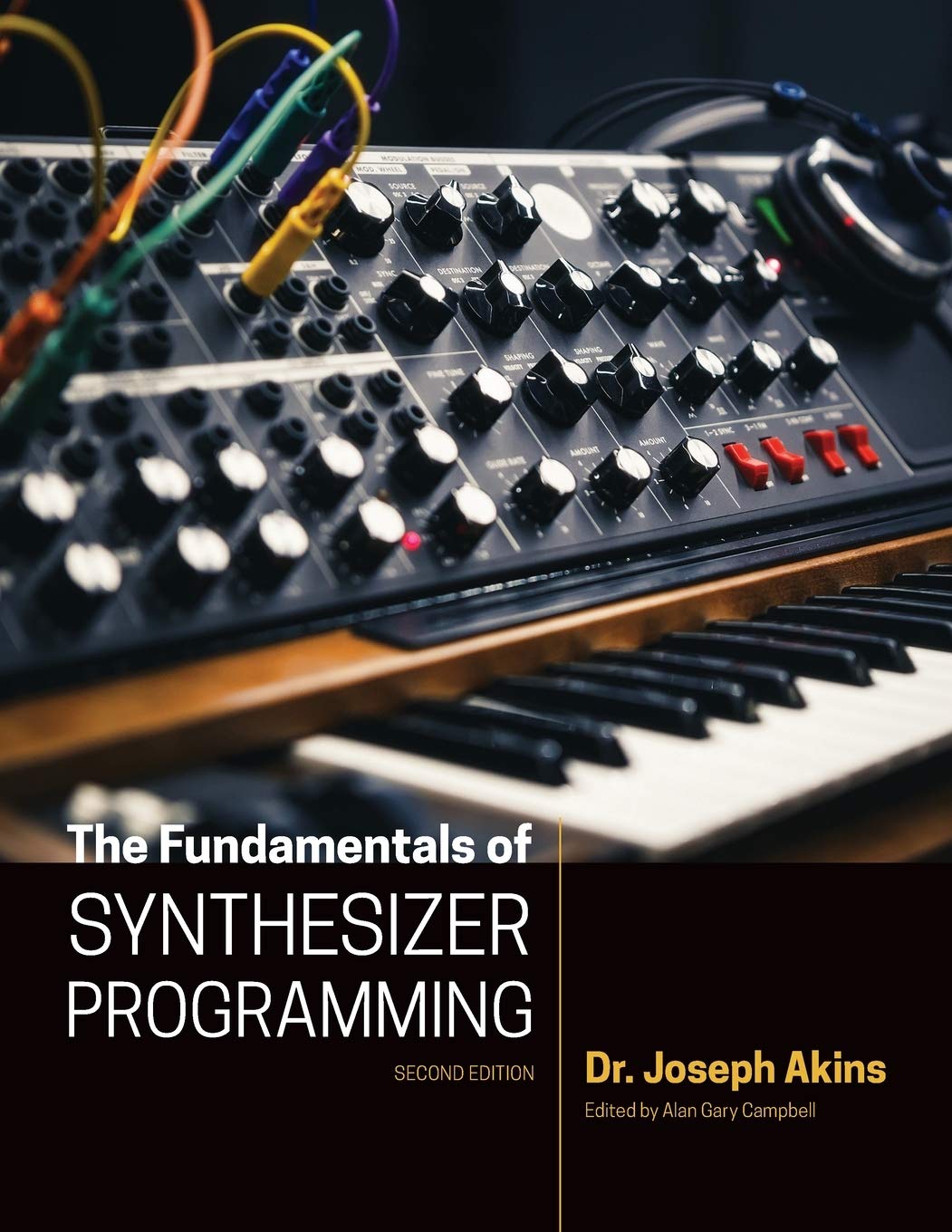

© Matrixsynth - All posts are presented here for informative, historical and educative purposes as applicable within fair use.
MATRIXSYNTH is supported by affiliate links that use cookies to track clickthroughs and sales. See the privacy policy for details.
MATRIXSYNTH - EVERYTHING SYNTH













© Matrixsynth - All posts are presented here for informative, historical and educative purposes as applicable within fair use.
MATRIXSYNTH is supported by affiliate links that use cookies to track clickthroughs and sales. See the privacy policy for details.
MATRIXSYNTH - EVERYTHING SYNTH




















